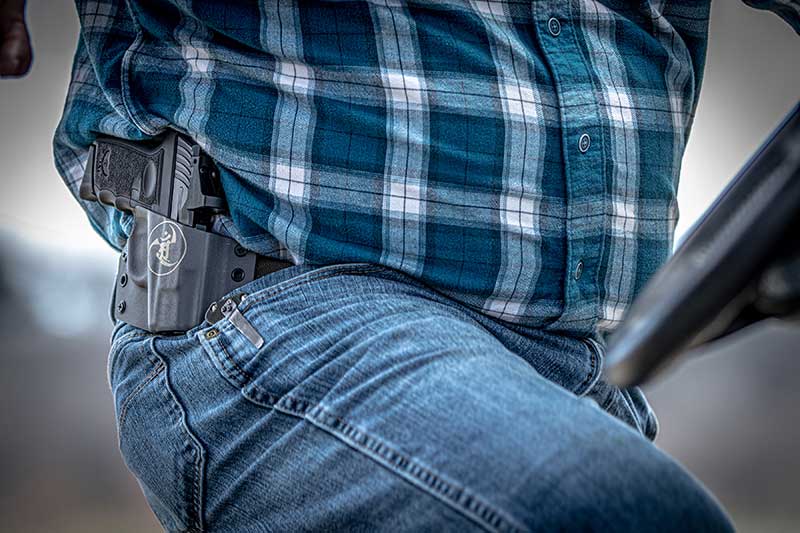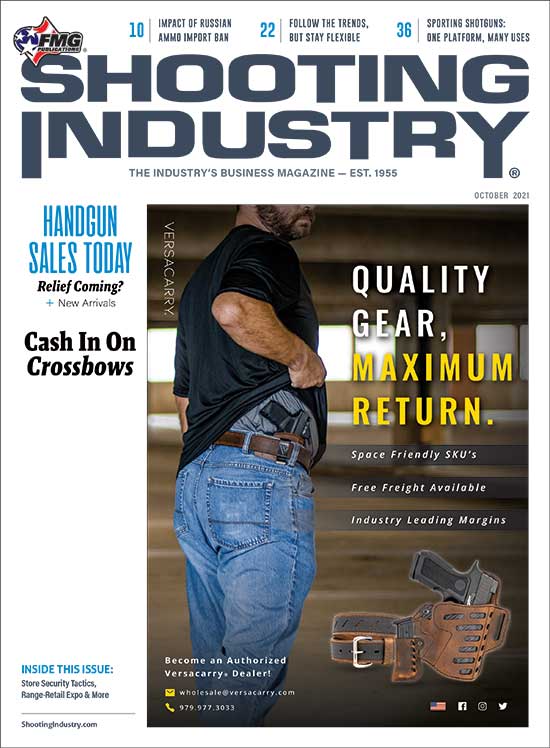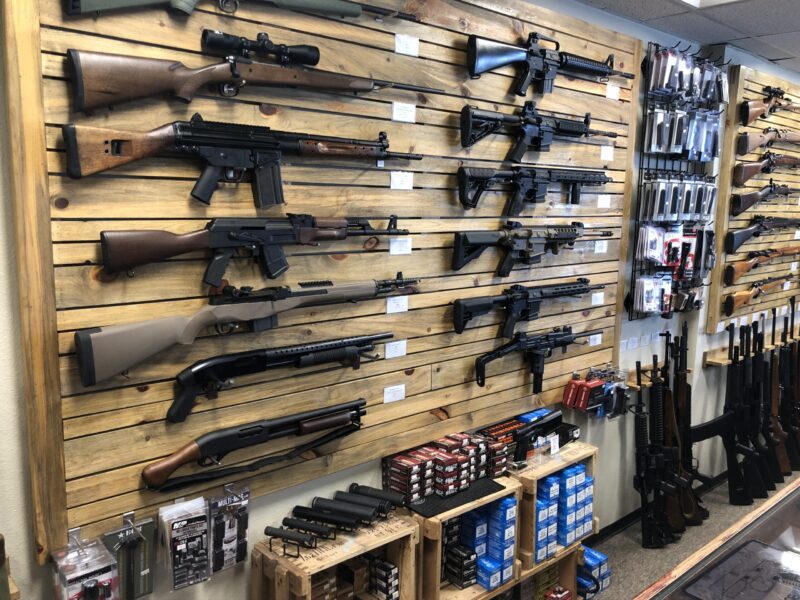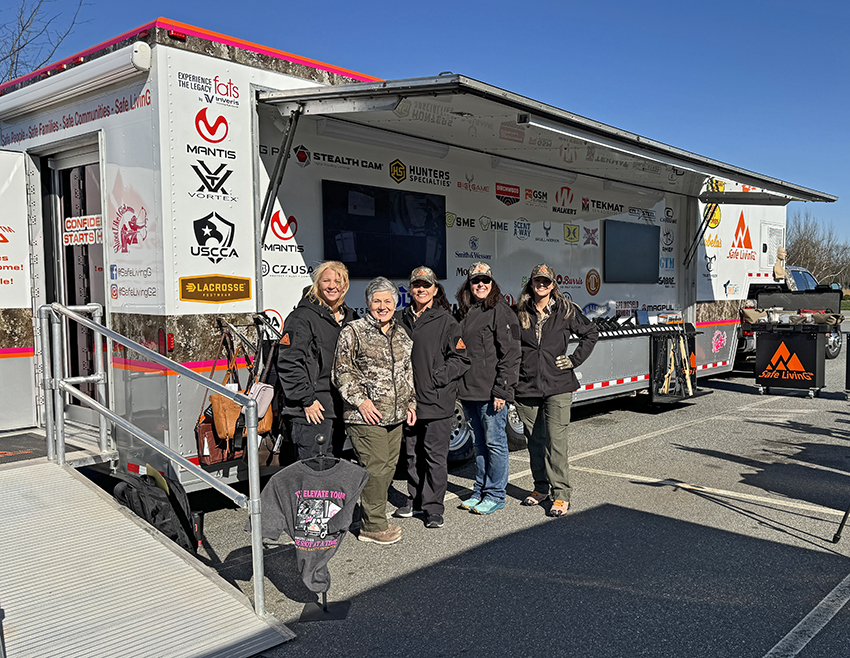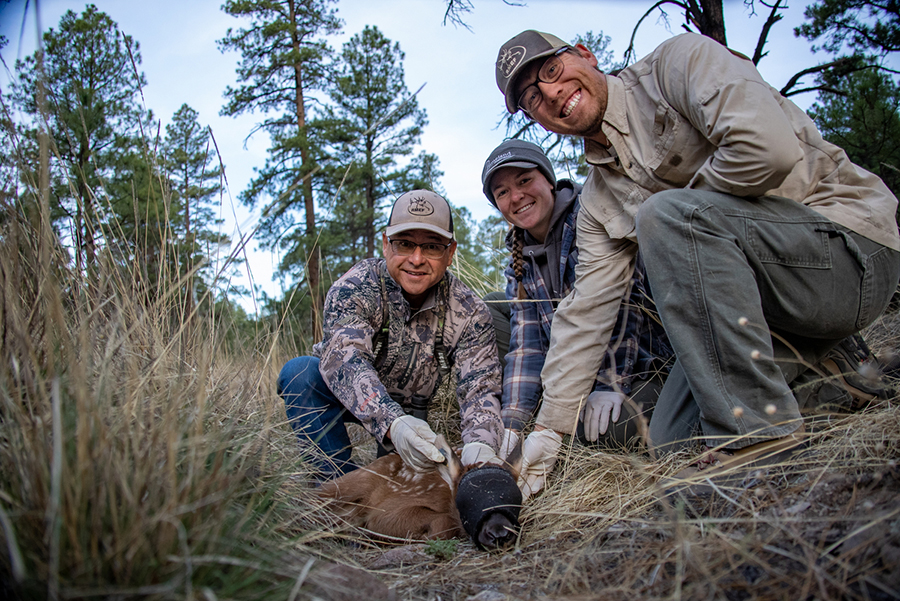Follow Current Trends,
But Stay Flexible
In any retail enterprise, it’s obvious the seller has to stay on top of buying trends to maximize product movement and profits. It follows that understanding what drives the given trend is critical to maximizing the market that trend has created.
A case in point is the “high-capacity micro 9mm.” Triggered a few years ago by SIG’s super-successful P365, we’re talking about a striker-fired pistol small enough to carry in a pants pocket holster and contains at least 10 rounds in the magazine and one more in the chamber. The P365 was followed by Springfield Armory’s Hellcat, which is capable of holding one more round. Next came Smith & Wesson’s Shield Plus, Ruger’s Max-9 and the Taurus GX4.
11 Tops 6
I’ve “bought and shot” the first three of those and can attest to their top-notch functionality. I haven’t personally shot the Ruger or Taurus entries yet, but both are compiling glowing reviews from testers whose competence and integrity I respect. Most, if not all, of these come with a spare magazine slightly extended in length and capacity.
Sales Tip: Remind the customer these pistols are in roughly the same weight class and size “footprint” of the snub-nose .38 Special revolver that, for generations, was America’s most popular concealed carry handgun — for law-abiding armed citizens and plainclothes cops alike.
Now, those older guns carried six cartridges max, and most of them, only five. So, an 11-shot “Micro Nine” holds the combined firepower of a classic six-shot Colt Detective Special and a five-shot Smith & Wesson Chief Special!
“Understanding what drives the given trend is critical to maximizing the market that trend has created.”
Moreover, the recoil of the modern 9mm semi-auto is distinctly softer, and the trigger pulls on these striker-fired guns are shorter and easier to manage, particularly in rapid fire. They’re dramatically faster to reload, too. Not to mention, they have a flatter profile for concealed carry that’s not only more discreet, but more comfortable with IWB holsters.
Just a few years ago, “carry optics” — the small red-dot sight atop a compact or even subcompact carry pistol — required custom gunsmiths to mill the slide. Now, numerous manufacturers are selling a “package deal” of a subcompact 9mm with a carry optic already installed. The Hex on my latest Springfield Hellcat had even been thoughtfully sighted in at the factory to co-witness with the backup iron sights before it came out of the box.
Another new arrival to the market, the Kimber R7 Mako, comes in Optics Ready and Optics Installed (Crimson Trace CTS-1500) variants.
“Upgrades” & “Newbies”
Beginning in Q1 2020, the buyer profile experienced some dramatic changes. The public became increasingly aware of riots, detention centers being emptied to spare the inmates from COVID-19, “woke” prosecutors releasing suspects in violent crimes on personal recognizance without bail and police departments that would be decimated by the pandemic and slow to respond to life-threatening emergencies.
This worsened in mid-2020 with the “defund the police” movement and riots that left the public pretty much on its own in some cities. The gun-buying surge was on, spurred by the media (and by reality!), and we started seeing new customer profiles in gun shops.
Two strong buyer categories we’re seeing now are “upgrades” — already armed citizens who think they need more firepower than they perceived to be necessary before and “newbies” who are, for the first time, awakening to the need to be able to protect themselves.
One firearm category that makes sense for new shooters is the pistol-caliber carbine (PCC), thanks to its mild recoil and sound report. With a telescoping stock, you have easy adjustability to fit anyone in the household deemed competent to undertake armed home defense … and a gun virtually as easy to shoot as that classic recreational sporting rifle, the semi-automatic .22.
Interestingly, the PCC’s appeal goes far beyond the amateur. My favorite stop on the shooting match circuit is The Pin Shoot (pinshoot.com), the descendant of the famous old Second Chance match where the primary targets are bowling pins. They have events for all sorts of handguns, carbines and shotguns. There’s a significant entry fee, commensurate with significant prizes, and it tends to draw serious shooters rather than newbies.
Roughly one-and-a-half more contestants shot the PCC event than shot the .223 rifle event. You can read that however you like, but it indicates the PCC is popular among the serious shooters, not just the novices.
What’s Old Is New Again
While the compact semi-auto 9mm clearly outguns the five-shot revolver once the shooting starts, there are other considerations in gun sales as we look across the spectrum of customers. As I talk to dealers around the country, I find many who can’t keep those “old-fashioned” snub-nose revolvers in the showcase.
There are reasons why even before the sociological phenomena we’ve discussed here took place Smith & Wesson, Ruger, Taurus and Charter Arms were still selling boatloads of .38 snubs … why Colt had re-introduced their D-Frame revolvers and sold them as fast as they could make them … and why market-savvy Kimber had not only introduced their new K6 series of revolvers, but have since continually added to the line.
On the new shooter side, the simplicity of operation and the implicit safety sells the revolver concept. There’s no slide to operate, no need to remember “do I remove the magazine first, or clear the chamber first?” There’s only “cylinder is open, there are cartridges in the chambers or there are not.” Someone buying their first lethal weapon is very much concerned whether it’s “loaded” or whether it’s “empty.”
“On the new shooter side, the simplicity of operation and the implicit safety sells the revolver concept.”
Perhaps, surprisingly, there are those on the “serious shooter” side who still appreciate the revolver’s role in self-defense. I follow two internet forums; one (invitation only) is primarily occupied by “serious students of the gun.” A long-running “What’s today’s carry?” thread has a very high number of short-barrel .38/.357 revolvers. On the other site — frequented by the “high speed, low drag” professionals who normally carry high-capacity, high-tech semi-autos (often with carry optics) — a “What are you carrying on the Fourth of July?” discussion thread in 2021 revealed a remarkable number carrying short-barrel revolvers on their own time.
Different customers have different needs. Current trends have to be followed, but every now and then, the old ways are the best ways for the given customer who comes to you for guidance.

